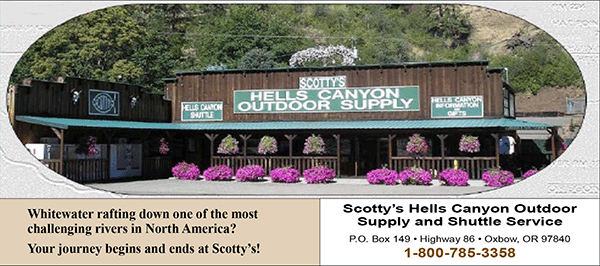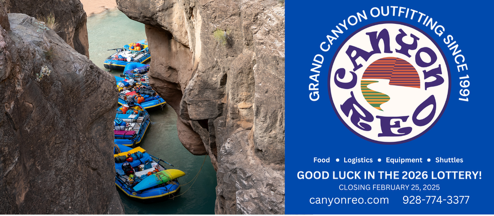Klickitat River
2024 Klickitat River Club Trip
Submitted by Doug Smith
(Photos contributed by Steve Herring and Kyle Riggs)
A Klickitat River campout with day trip runs used to be a club tradition. For many years the club held an annual Anniversary Float on the Klickitat around the second week of June to celebrate the founding of the club. Eventually, too many dry years made having runnable flows that time of year unpredictable and the Klickitat tradition faded out. There were a few times since then that the Klickitat made it back on the trip calendar as a regular club trip (no the Anniversary Float), but again scheduling became an issue and it fizzled out.
The Klickitat is an amazing river. It has continuous Class III-ish rapids for the first seven to ten miles, tapering off to less continuous Class II and III after that. This river has unmatched scenery. Driving through the Glenwood Valley on the way to the put-in provides sweeping views of the southeast side of Mt. Adams. There are distant views of Mt. Hood if you turn around, but Mt. Adams is so prevalent that most people don’t bother. The drive takes you through the Conboy wildlife refuge where elk, deer and sandhill cranes are frequently seen. Once on the river, towering columnar basalt cliffs in the upper section give way to a more open but still scenic canyon scattered with grasslands and scrub oak in the lower section. A few waterfalls where side streams enter the river liven things up even more.
It’s a river trip that people always seem to say good things about (well, maybe not always, but those stories are for another day). There had been a lot of interest in this trip in the past, so for several years we’ve been talking about putting it back on the calendar. The dates and timing just didn’t seem to work out. Well, last year it all came together. Steve Herring stepped up to lead the trip and took the Klickitat trip to a level not seen since those early Anniversary Float days! His organizational skills were amazing. We had a large group on a small river, but he pulled it off. We camped out at a property that my wife Nancy and I own on Troh Lane, adjacent to the wildlife refuge and about four miles south of Glenwood. It’s a rural property, far from glamorous, but is in a nice quiet location with lots of wildlife nearby and with room to accommodate camping for a large group. All in all, the 2023 trip went well and we got lots of positive feedback.
So why mess with success? Steve stepped up to lead the trip again. Memorial Day seemed to fit the schedule best and a 2024 trip was put on the calendar for May 24 – 27. I’d say it went just as well as the 2023 trip. Looks like we are on a roll.
Enough pre-amble. Here’s the actual report:
Group size and logistics:
We had a large group. Steve’s last spreadsheet showed over 50 people signed up. We had camping available Friday, Saturday and Sunday nights with club sponsored burgers and a group potluck for sides and desert on Saturday. Boating trips were planned for Saturday, Sunday and Monday, pending interest.
Not everyone boated all three days and not everyone camped all three nights, so the group size was pretty manageable.
The Upper Klickitat Saturday/Sunday:
This is a dangerous river. There is a lot of downed wood lining the banks in the upper section and occasionally there are river wide strainers. It changes every year. We’d been running trips for smaller groups up here for many years, so in 2023 felt like we were ready to step it up to a large group as long as we split the group up. That worked well, so we did the same thing again this year.
First, Steve, his wife Cindy and I did a quick run from the raft put-in down to the fish hatchery on Friday to scout out a few known hazards. Courtesy of a few on-line reports and a phone call with Mark Zoller, a local outfitter who has always been generous in providing information for OWA club trips on the Klickitat, we had heard that there were several new logs and at least two portages. Plus the weir at the fish hatchery is always a hazardous mess and can’t really be scouted with a large group. We wanted to be able to describe the route in detail to avoid any major consequences. After our Friday scouting run, other than suffering through the mosquitos at the takeout, we had things pretty well in hand for the next day.
Saturday we had a large group of boaters. I may have the exact number wrong, but my memory is we had 18 boats, including a mix of catarafts, paddle rafts and oar rigs. We split into two groups of roughly nine boats each. There were a handful of kayaks thrown in the mix also, but we didn’t include them in the total count.
This next part can be a little dizzying and I won’t blame the editors if they cut it out. The shuttle is rough. Trying to do it with a larger group is a head-spinner. The drive from the raft put-in to Leidl campground takes about an hour one way. With a large group it’s nearly impossible to figure out how to have enough rigs at the takeout to avoid having to drive clear back up and back again. Especially not knowing exactly who might show up at the last minute. Fortunately, the Troh Lane property is just about halfway in between the put-in and the takeout. So while group one launched, group two ran all of the vehicles back to the house where we were camped and left them there. Thanks to Scott Harvey, who was taking the day off from boating, we were able to shuttle the drivers back up without leaving any rigs at the put-in. When group one got to the takeout at Leidl, they took a couple of rigs that had been stashed there, shuttled drivers back to the house, picked up the rigs that had been left there and headed back to the takeout so the whole group could return in one trip. It went remarkably smoothly, and no one had to drive the full two hour shuttle.
Saturday’s run went great. We had good flows (1730 cfs at the Pitt gage) and decent weather. A little on the cool side, but no rain and some sun breaks.
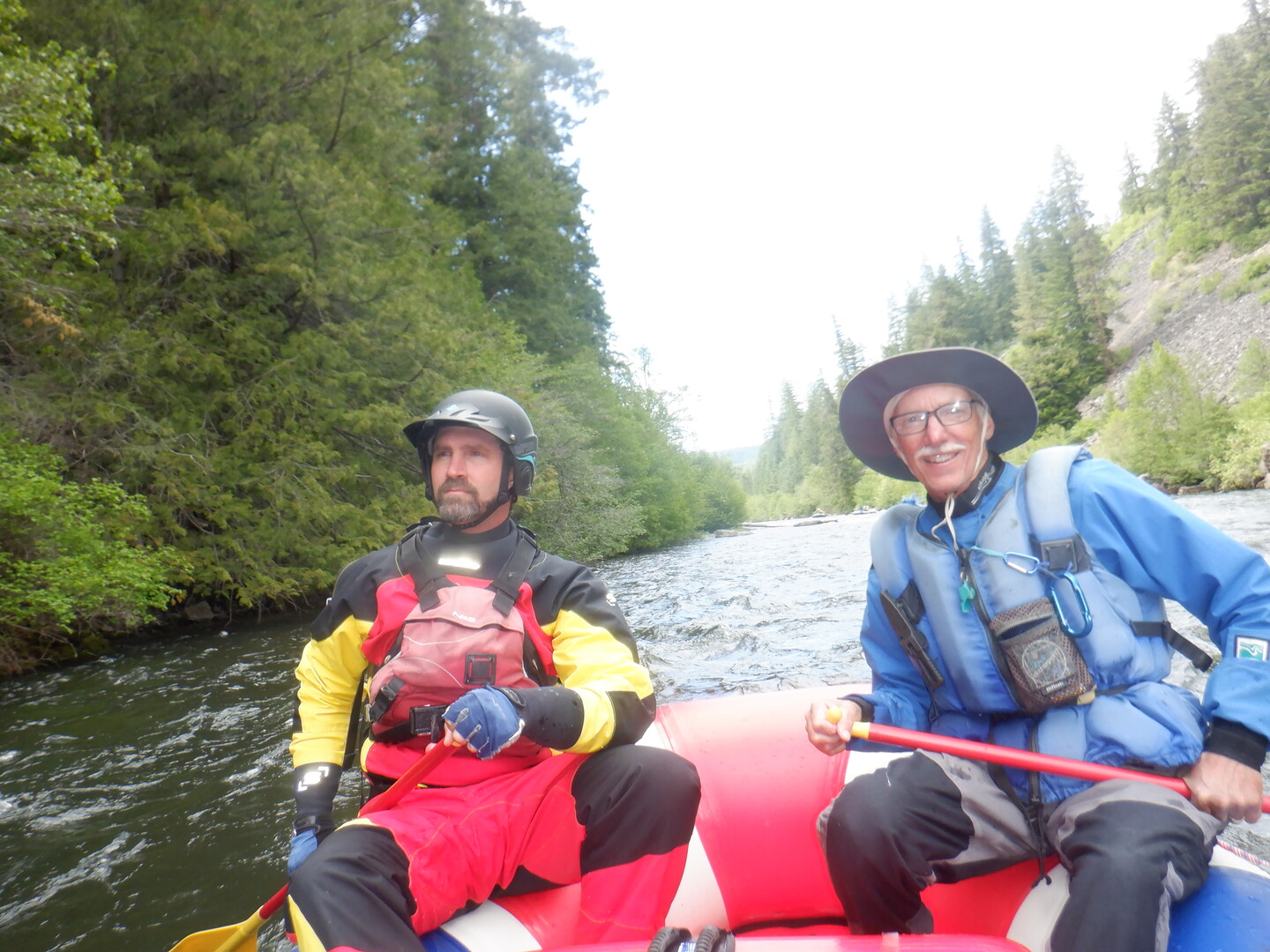
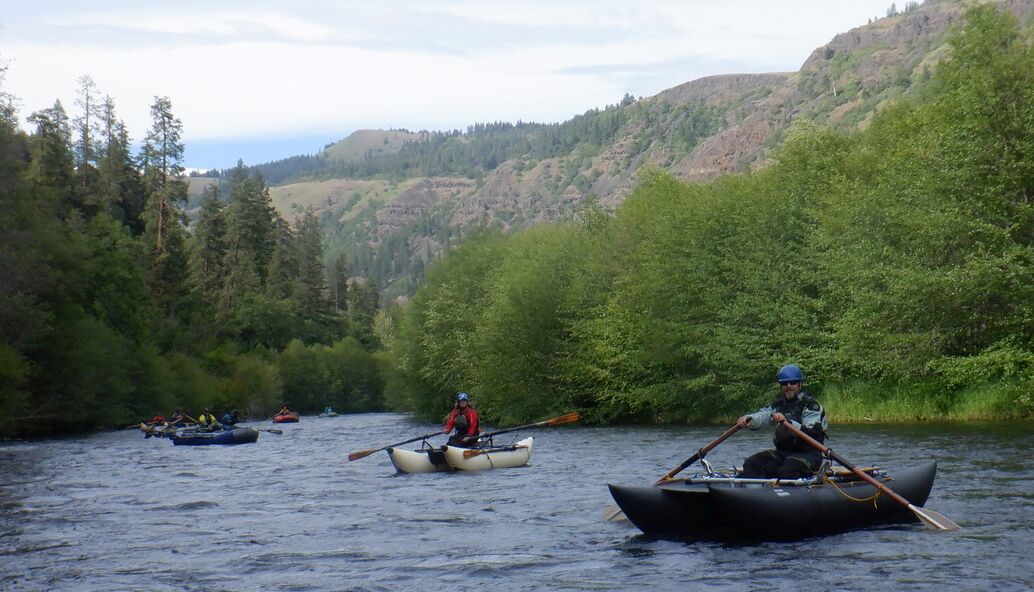
The two log hazard portages went smoothly. At each one, the full group stopped to scout the line. The first log has been there a while (a few years at least). At our flows, small boats could run a shallow, boat bumping line along the shore and make an easy limbo move to miss the log. Larger boats chose to line the boats to avoid getting pushed too far right by shoreline rocks and sticks. The second log is new as of 2024 (green branches are still attached) and has a lot more current flushing into it. The line here is a low flow channel left of the main flow. Cat boats could bump and “Flintstone” through without getting out; it was easier to line the round boats through.
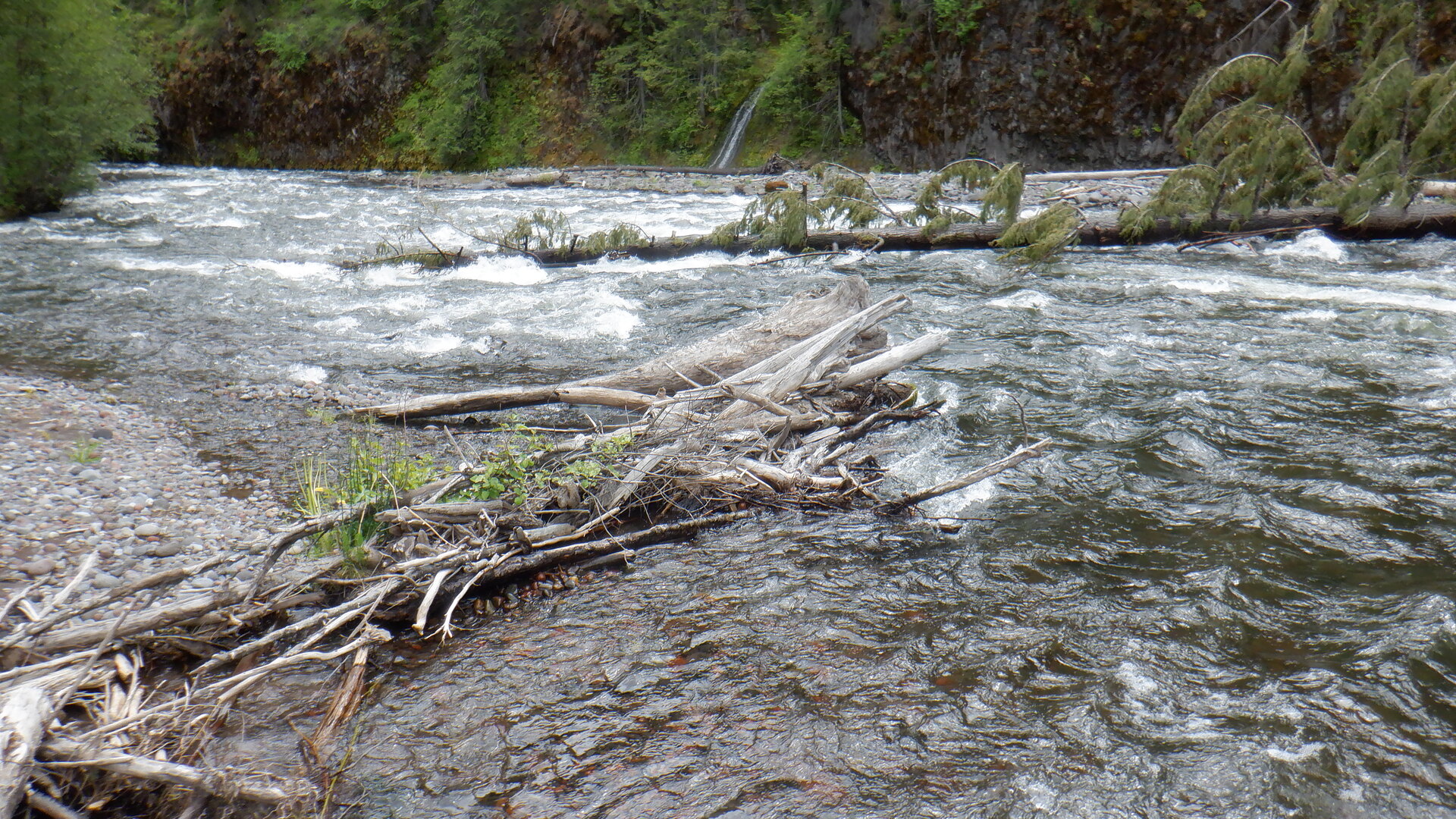
(Log Hazard #2)
The last big hazard, the low-head dam at the hatchery, was more difficult.
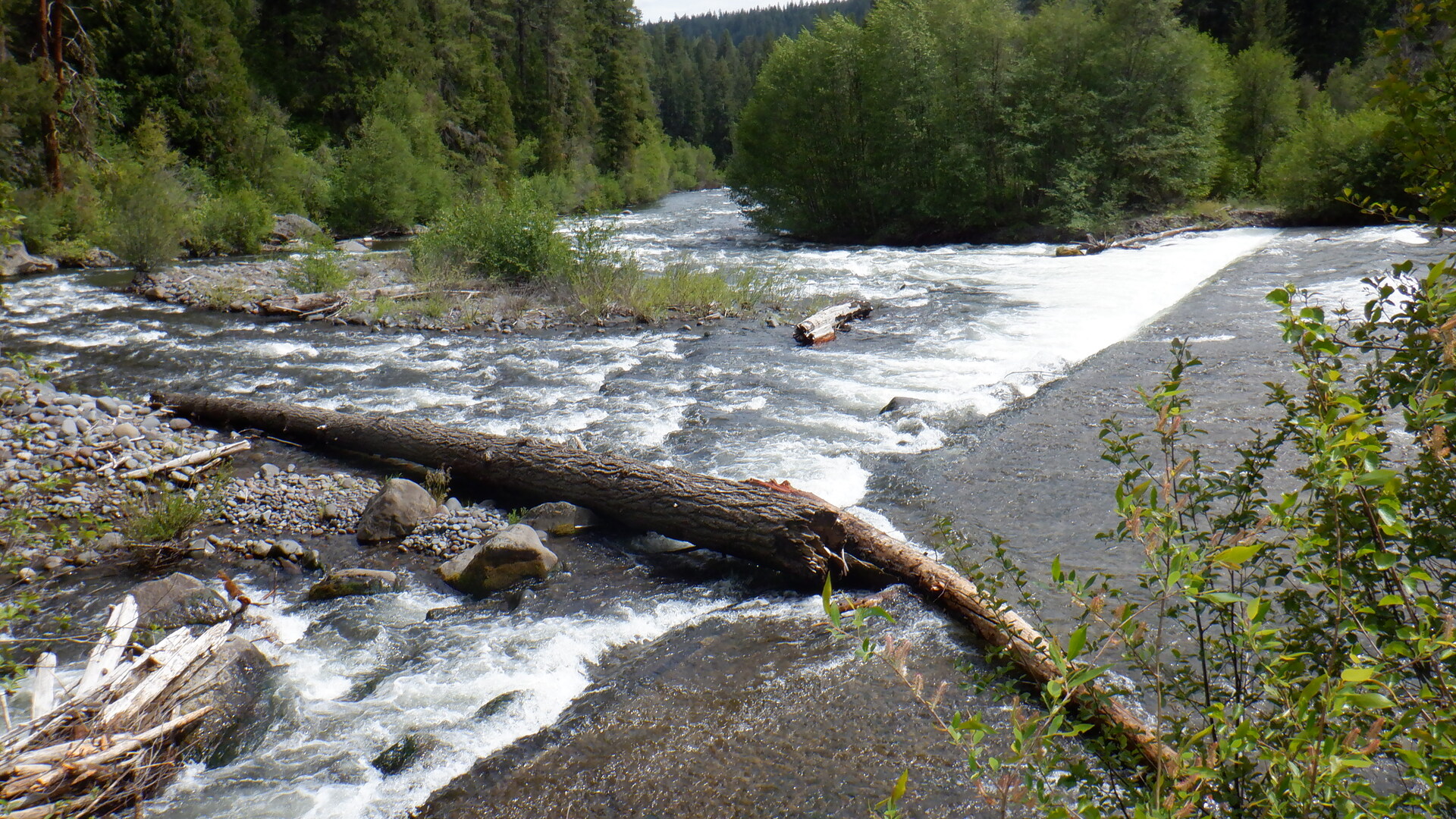
(Low head dam at the fish hatchery, 2024)
Running the main weir is dangerous. I’ve seen several cat-boats think they punched the wave and stop rowing to miss a shallow island immediately below only to get pulled back in and surfed by the low head dam hydraulic for something like thirty to forty-five minutes. To make matters worse, this year there is a log immediately below the spot where the hole might eventually spit you out. So, the safe and sane run is through a very shallow rocky channel left of the island. Though this can change. This year the left channel line was similar to the line in 2023. Get as close as you can to the log lining the left channel and hope for the best. Maybe half the boats got close enough; the others got stuck on a mid-channel rock. We later learned that in group two, Colin Adams was able to wade out to the rock and help people push off. Colin is tall, strong and has a brand-new dry suit. In group one, Doug Smith (said author) was able to walk to the head of the island with a throw rope and enthusiastically shout encouragement. Doug is very much “not slender”, he is short and has dry suit booties that leak like a sieve. Needless to say, group two got past the hatchery a fair bit faster than group one. Had we known then what we know now, group one would not have been as surprised when group two showed up at the lunch spot downstream of the dam just as group one was finishing up.
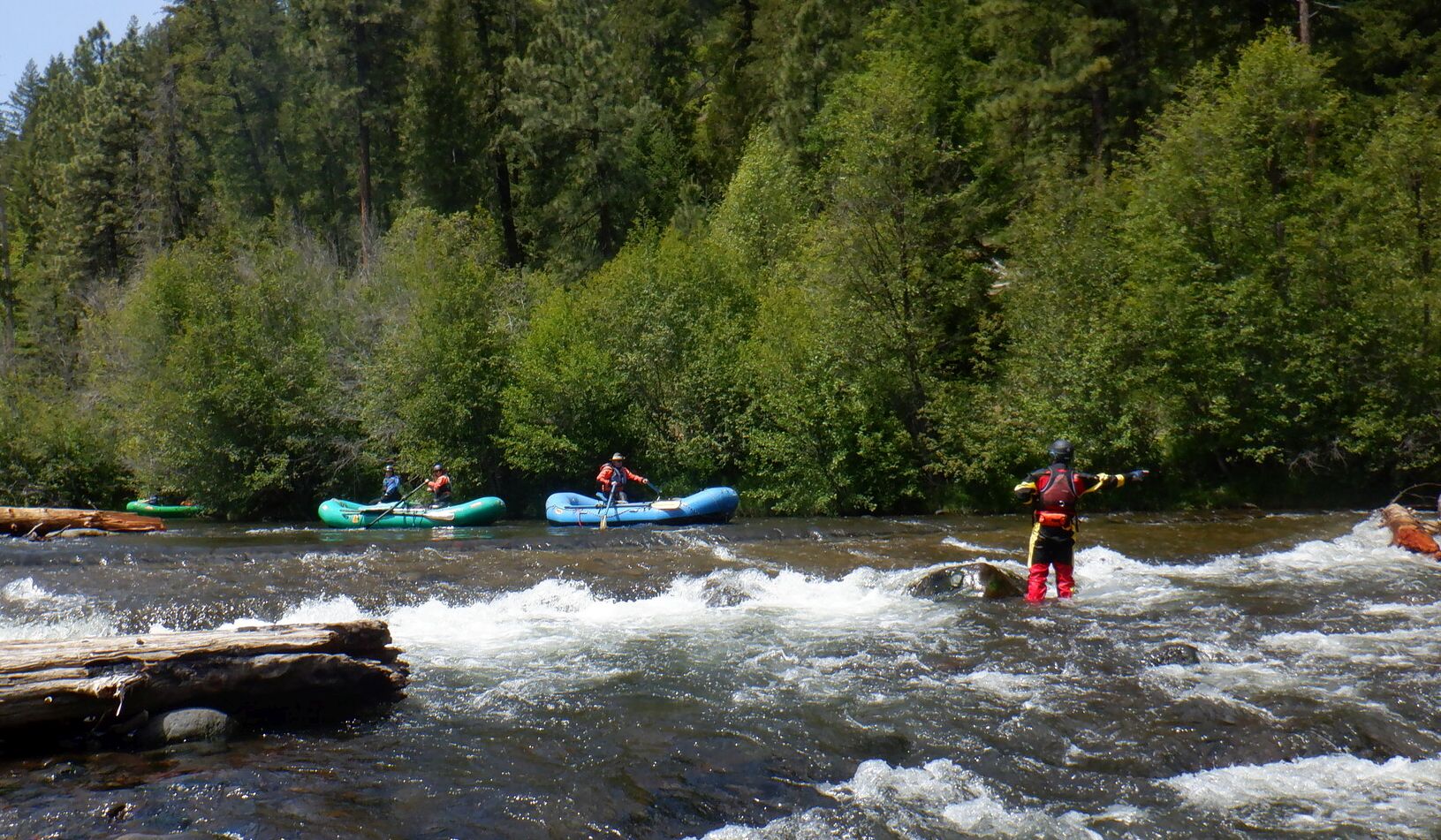
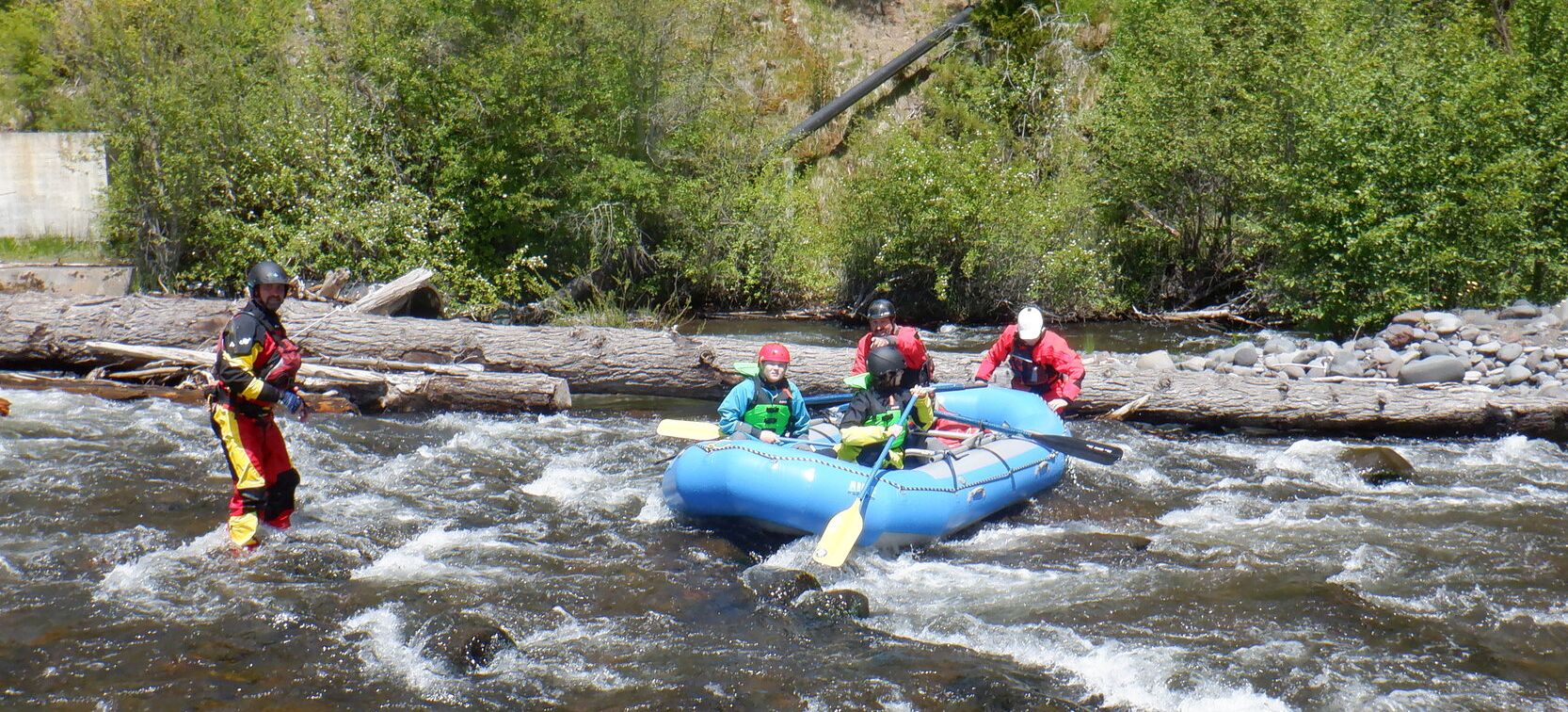
After lunch, the trip is much mellower. As mentioned in the intro, the continuous Class III in the section above the hatchery transitions to more spread-out Class II and III below the dam with breaks in between. Also, the lush fir and towering basalt cliffs open up into a deep, broad canyon with scrub oak, grass lands and more scattered fir and pine stands.
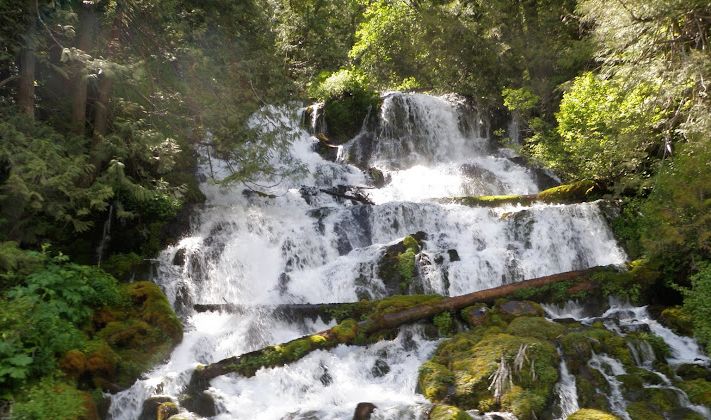
(Wonder Falls, downstream of the fish hatchery)
The second half of the run always sees warmer temperatures and was pleasant and uneventful.
Sunday was more or less a repeat of Saturday, but with warmer temperatures, about 50 cfs less flow (1680 cfs at Pitt) and enough fewer boats that we did not need to split into two groups. We had somewhere around ten boats on Sunday, but a larger percentage were paddle boats, so we still had a pretty good sized group of 20+ boaters. We were fortunate to have enough good-hearted people who were headed home and not-boating volunteer to run shuttle for us, making the day two shuttle a lot simpler than day one.
Day two went quite a bit faster than day one. Even though a lot of the Sunday boaters had not run it the day before, enough of us had the log hazards dialed in from Saturday that we could move through them a lot quicker. A lot of boats still got stuck in the left channel at the weir. It is really difficult to hit the line next to the log. It’s shallow with limited maneuverability and the angles are all wrong. Fortunately, this time the full group benefited from Colin’s height, fitness and brand-new dry suit.
Two great days on the Upper Klickitat.
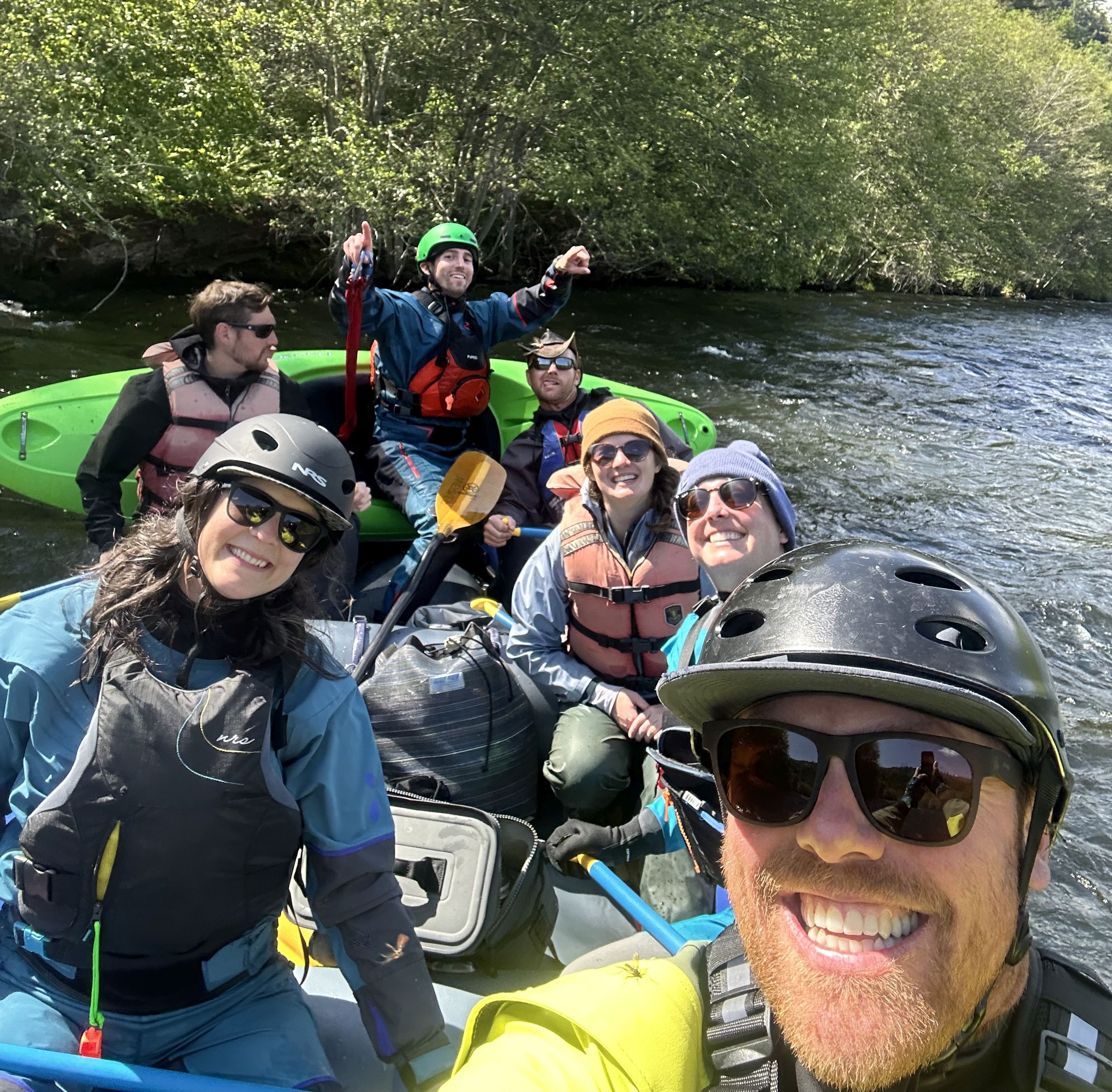
Camping, Burger Feed and Potluck: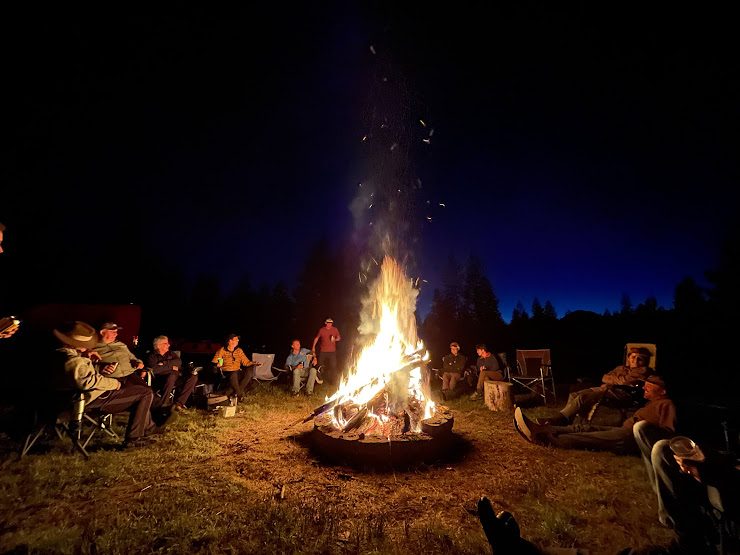
(Photo by Justin Richard, 2023– Trust me, 2024 was similar)
Most people camped in tents either in the pasture or back in the trees. A few people brought campers and/or vans to camp in luxury.
One nice thing about camping at the Troh Lane property in late May and early June is that there is plenty of wood for a bonfire; the fire ban doesn’t usually go into effect until June 15. Also, we were fortunate to be early enough in the year and have a strong enough breeze that mosquitoes were not a big problem.
Saturday evening, things were well organized and we were able to the burger feed/potluck started quickly, even after a long day on the river. The club was providing hamburgers for everyone as a main course and Steve Herring had the burgers and fixings ready to go. Unfortunately there was an unavoidable last minute cancellation on his cook crew. He quickly recruited Peter West to help out. Peter did a great job on the burgers. And the potluck dishes contributed by everyone else were top notch. To top it off, there were enough leftovers to repeat the event Sunday for those who chose to stay.
In short, the campout and potluck were the usual OWA mix of great food and good times visiting with old and new friends.
Winding down, Monday on the Lower Klickitat: We had left Monday open as a flex-day depending on who stayed and what the interest level was. Most of the Sunday campers left after breakfast Monday morning. Only a few people were interested in boating: Tom Riggs, Scott Harvey, Steve Herring, Nancy Smith and myself were all planning to join Scott on the Naches and had a day to kill before heading over there. After weighing our options, the five of us decided to pack our gear, run the Lower Klickitat from the Ice House river access to the last fishing access above the Lyle Gorge and then camp in that area before leaving for the Naches the next morning.
The Lower Klickitat is mostly Class I with some Class II and one Class III right before the takeout. It has fast-moving current, but not a lot of rapids. The road follows the entire run, and there is quite a bit of private land, but it is still a nice, easy-going float if you have time on your hands.
Our main entertainment came at the takeout that is before the one Class III. A drift boater had misunderstood the names of the takeouts. His car was waiting a few miles downstream below the Class III rapids, which he did not want to run (good choice). He was offered a ride in Tom’s raft, but instead said he would jog down to the lower takeout (bad choice). After a little persuasion (many of you know Tom and his many talents!) Tom picked up a passenger, soaked him in the rapids and delivered him to the lower takeout where his car was parked. All of us had a great run through the final rapids and almost forgot about the flatwater above. As an added surprise bonus, we were greeted at the takeout by long-time OWA member Roger Stewart.
Well, all in all another successful club trip on the Klickitat and a great way to spend Memorial Day weekend. Does this mean we start calling it the “Annual OWA Klickitat Trip”? Maybe. We’ll see what dates look like they might work in 2025 and go from there. We got a lot of positive feedback both last year and this year, so I think we may be sold on the concept. We’ll see.

